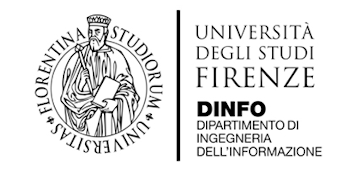Geoarchaeological methods for coastal site and landscape reconstructions
ORGANIZED BY
Pietro P.C. Aucelli
Università Parthenope di Napoli, Italy
Carmen Maria Rosskopf
Università del Molise, Italy
Gaia Mattei
Università Parthenope di Napoli, Italy
Michele Stefanile
University of Naples "L'Orientale", Italy
ABSTRACT
Since historical times, the construction of coastal cities and commercial ports have played a strategic role in human development, strongly modifying the coastal zones, which are already areas of high dynamics, characterized by continuous landscape changes. Moreover, the human-induced modifications on the coasts have been also aimed to reduce the impacts of relative sea level rise due to global and local changes.
Human-environmental interactions in coastal zones are a key theme in Quaternary environmental researches finalized to the reconstruction of ancient paleolandscape and their evolution analysis. Obtainable data are crucial for assessing the impact of current and future climate change and anthropogenic pressure on the coastal zones at risk. In the last years, the integration between geo-acoustic and optical indirect methods allowed the high-resolution mapping of wide coastal areas and archaeological sites by combining remote sensed and direct data. These multidisciplinary approaches allow collecting four-dimensional data - 3D points and time – with great documental value of the archaeological heritage, also in the case of semi or totally submerged structures. These achievements at the same times are useful constants for detailed coastal reconstructions and evolutions.
This session welcomes papers that concern multidisciplinary and/or modern approaches to explore ancient coastal landscapes, geomorphological processes, human impacts and system responses, as well as issues such as landscape evolution, resilience and human adaptation. Themes may include the impacts of coastal dynamics and changes on human settlements, as well as the impacts of anthropic constructions on coastline evolution. Approaches involving the use of multi-scalar datasets are encouraged.
TOPICS
- Measurement techniques for reconstructing ancient coastal landscapes;
- Remote sensing and geophysical survey applications for underground and underwater archaeology;
- Multi-proxy assessment for studying the evolution of anthropic landscapes in coastal zones;
- In situ surveys and geomatics techniques for the three-dimensional reconstruction of ancient coastal landscapes;
- Environmental approaches to reconstruct past changes in landscape, climate, flora, and fauna.
ABOUT THE ORGANIZERS
Pietro P.C. Aucelli, has an Associate Professor in Physical geography and Geomorphology at Università degli Studi di Napoli "Parthenope". He is graduated in Geological science. In the year 2000, he obtained the PhD in Environmental Geology at Molise University. During his formation, he got his specialization in applied geomorphology, geological survey and mapping and GIS analysis.
Carmen Maria Rosskopf has graduated in Geological Sciences at the University of Naples Federico II. Since 2001, she is Associate professor of Physical Geography and Geomorphology at the University of Molise. Her research interests in the field of geoarchaeology are: historical map analysis and photointerpretation, reconstruction of the paleoenvironment of archaeological sites and environmental evolution of archaeological areas, geomorphological and thematic mapping of archaeological areas, archaeological landscape reconstructions, archaeological potentiality and risk analyses. She is an expert in coastal geomorphology and has several experiences in archaeological site survey, including, among others, the sites of Poseidonia (Paestum), Velia and Kaulonia.
Gaia Mattei, is a postdoctoral researcher in Coastal Geomorphology at Parthenope University of Naples. She is graduated in Environmental science, and, was PhD student of 28th cycle of Doctoral School in Earth, Marine and Climate Sciences at Parthenope University of Naples. She is specialized in coastal geomorphology; Sea level changes and tectonics; geoarchaeology; marine survey applied to submerged geomorphology and underwater archaeology; GIS mapping and analysis
Michele Stefanile, is an underwater archaeologist and a Ph.D. in Classical Archaeology at the University of Naples “L’Orientale”. For the same University at that moment he is responsible for the laboratory courses in Archaeology of Submerged Structures and Archaeological Communication. At the same time, he is working as a tutor in the iOS Foundation Program, in cooperation with Apple inc., for the development of mobile app related with Humanities and Cultural Heritage. He works also for the ISCR-Italian Institute for Restoration, as underwater archaeologist, in the MUSAS Project (Monitoring and Enhancing Underwater Cultural Heritage in Campania, Puglia and Calabria).














